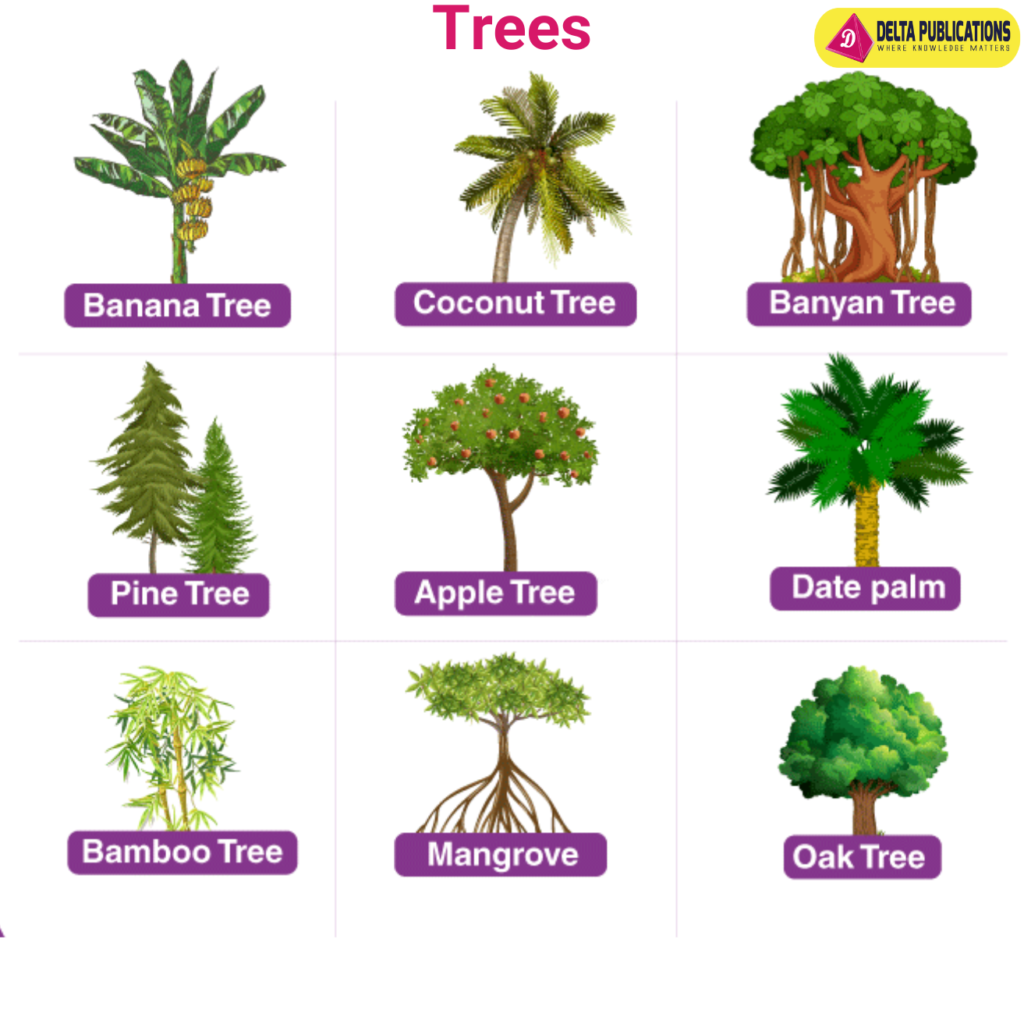Herbs, Shrubs, and Trees
herbs, shrubs and trees by Delta publications
Key Notes :
Definition and Basic Differences
- Herbs: Small, non-woody plants with a short lifespan (e.g., basil, mint). Typically have soft, green stems and are often used for culinary, medicinal, or aromatic purposes.
- Shrubs: Medium-sized, woody plants with multiple stems growing near the ground (e.g., rose, hibiscus). Shrubs are usually bushy and can live for many years.
- Trees: Tall, woody plants with a single main stem or trunk (e.g., oak, pine). Trees have a long lifespan and can grow to be very large.
Growth Habit and Structure
- Herbs: Generally grow close to the ground and do not have a significant woody structure. Their stems are tender and can be easily broken.
- Shrubs: Have a woody structure but are shorter than trees. They have multiple branches coming from the base or just above the ground.
- Trees: Have a prominent woody trunk that supports branches, leaves, flowers, and fruits. The trunk grows thicker with age, and trees can live for hundreds of years.
Lifespan
- Herbs: Usually annuals or biennials; they complete their life cycle in one or two seasons.
- Shrubs: Perennials, meaning they live for several years. They shed their leaves seasonally, depending on the species.
- Trees: Long-lived perennials, with some species living for decades to centuries. They also go through seasonal cycles of leaf shedding and regrowth.
Examples
- Herbs: Mint, cilantro, parsley, thyme, basil.

- Shrubs: Rose, jasmine, bougainvillea, hibiscus.

- Trees: Oak, maple, pine, mango, banyan.

Uses
- Herbs: Commonly used in cooking, medicine, and for fragrance. Many herbs have medicinal properties and are used in traditional medicine.
- Shrubs: Often used for ornamental purposes in gardens and landscaping. Some shrubs produce fruits or flowers used in food and decoration.
- Trees: Provide wood for construction, paper, and fuel. Trees also produce fruits, oxygen, and are crucial for maintaining ecological balance.
Ecological Importance
- Herbs: Contribute to biodiversity and serve as ground cover to prevent soil erosion.
- Shrubs: Provide habitat and food for many animals and insects, help in preventing soil erosion, and contribute to the landscape’s aesthetics.
- Trees: Essential for carbon sequestration, oxygen production, and as habitats for a wide range of wildlife. They also help in maintaining the water cycle and preventing soil erosion.
Root Systems
- Herbs: Shallow root systems that spread out close to the surface.
- Shrubs: Deeper and more extensive root systems than herbs, helping in soil stabilization.
- Trees: Very deep and widespread root systems that can support the massive size of the tree and absorb water and nutrients from deep in the soil.
Let’s practice!

